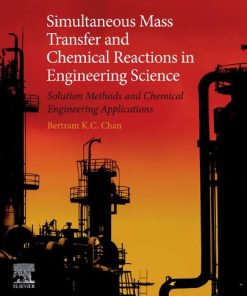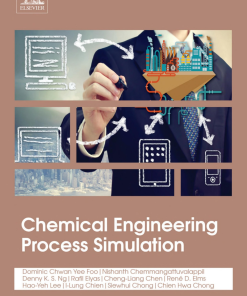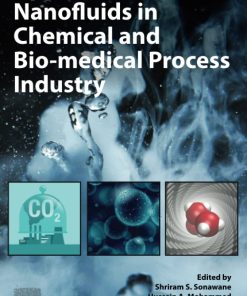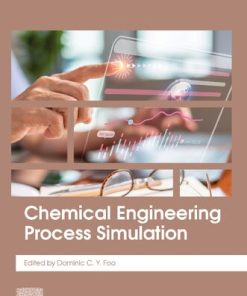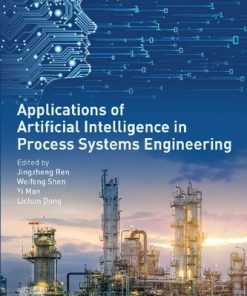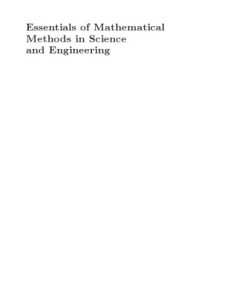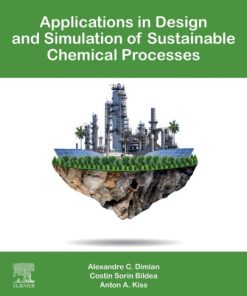Simulation and optimization in process engineering the benefit of mathematical methods in applications of the chemical industry 1st Edition by Michael Bortz 0323850448 9780323850445
$50.00 Original price was: $50.00.$25.00Current price is: $25.00.
Simulation and optimization in process engineering : the benefit of mathematical methods in applications of the chemical industry 1st Edition by Michael Bortz – Ebook PDF Instant Download/DeliveryISBN: 0323850448, 9780323850445
Full download Simulation and optimization in process engineering : the benefit of mathematical methods in applications of the chemical industry 1st Edition after payment.
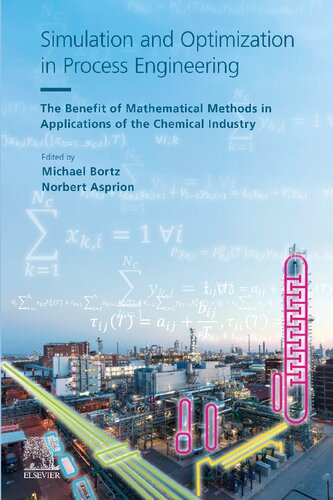
Product details:
ISBN-10 : 0323850448
ISBN-13 : 9780323850445
Author : Michael Bortz
Simulation and Optimization in Process Engineering: The Benefit of Mathematical Methods in Applications of the Process Industry brings together examples where the successful transfer of progress made in mathematical simulation and optimization has led to innovations in an industrial context that created substantial benefit. Containing introductory accounts on scientific progress in the most relevant topics of process engineering (substance properties, simulation, optimization, optimal control and real time optimization), the examples included illustrate how such scientific progress has been transferred to innovations that delivered a measurable impact, covering details of the methods used, and more.
Simulation and optimization in process engineering : the benefit of mathematical methods in applications of the chemical industry 1st Table of contents:
Chapter 1: Prediction and correlation of physical properties including transport and interfacial properties with the PC-SAFT equation of state
Abstract
1: Model equations of PC-SAFT
2: Parameterization
3: Group-contribution methods for PC-SAFT
4: Transport properties
5: Interfacial properties
References
Chapter 2: Don’t search—Solve! Process optimization modeling with IDAES
Abstract
1: Introduction
2: Solution algorithms and optimization models
3: Advanced optimization for differential-algebraic applications
4: The IDAES optimization modeling software platform
5: Carbon capture optimization case study
6: Conclusions and future perspectives
References
Chapter 3: Thinking multicriteria—A jackknife when it comes to optimization
Abstract
Acknowledgments
1: Introduction
2: Process design
3: Model adjustment, model comparison and model-based design of experiments
4: Decision support
References
Chapter 4: Integrated modeling and energetic optimization of the steelmaking process in electric arc furnaces: An industrial application
Abstract
1: Introduction
2: Electric arc furnace process model
3: Dynamic optimization of the melting profiles
4: Solution using control vector parametrization
5: Results and discussions
6: Conclusions
References
Chapter 5: Solvent recovery by batch distillation—Application of multivariate sensitivity studies to high dimensional multiobjective optimization problems
Abstract
1: Introduction
2: Problem definition
3: Literature review
4: Methodology
5: Set up of the flowsheet simulation
6: Results
7: Summary
References
Chapter 6: Modeling and optimizing dynamic networks: Applications in process engineering and energy supply
Abstract
Acknowledgment
1: Introduction
2: AD-Net
3: Applications in energy supply
4: Applications in batch distillation
5: Conclusion
References
Chapter 7: The use of digital twins to overcome low-redundancy problems in process data reconciliation
Abstract
Acknowledgments
1: Introduction
2: Data reconciliation
3: Clever mean and clever variance (cm and cv)
4: Median and mad
5: Industrial case study: Itelyum Regeneration amine washing unit
6: Results
7: Conclusions
References
Chapter 8: Real-time optimization of batch processes via optimizing feedback control
Abstract
1: Introduction
2: Representation of batch processes
3: Numerical optimization of batch processes
4: Feedback-based optimization of uncertain batchprocesses
5: Illustrative example: Batch distillation column
6: Conclusions
References
Chapter 9: On economic operation of switchable chlor-alkali electrolysis for demand-side management
Abstract
Acknowledgments
1: Introduction
2: Operational mode switching of chlor-alkali electrolysis
3: Mathematical formulation for optimal sizing and operation of switchable chlor-alkali electrolysis
4: Case study
5: Conclusion
References
Chapter 10: Optimal experiment design for dynamic processes
Abstract
1: Introduction
2: Optimal experiment design for model structure discrimination
3: Optimal experiment design for parameter estimation
4: Advanced developments in optimal experiment design
5: Conclusions
References
Chapter 11: Characterization of reactions and growth in automated continuous flow and bioreactor platforms—From linear DoE to model-based approaches
Abstract
1: Introduction
2: Miniaturized platforms and applications
3: Special aspects and challenges
4: Industry view
5: Discussion and conclusions
References
Chapter 12: Product development in a multicriteria context
Abstract
1: Introduction
2: Model fitting
3: Multicriteria optimization and decision-making
4: Approximating the set of efficient product designs
5: Navigating the set of efficient product designs
6: The role of Qritos in the design process
7: Application: Designing an exterior paint recipe
8: Outlook
References
Chapter 13: Dispatching for batch chemical processes using Monte-Carlo simulations—A practical approach to scheduling in operations
Abstract
1: Introduction
2: Proposed solution
3: Implementation
4: Beyond real-time operative scheduling
5: Conclusions and outlook
References
Chapter 14: Applications of the RTN scheduling model in the chemical industry
Abstract
Acknowledgments
1: Introduction
2: Review of RTN model
3: Industry-led developments
4: Industrial impact
5: Conclusions
People also search for Simulation and optimization in process engineering : the benefit of mathematical methods in applications of the chemical industry 1st:
what is simulation and optimization
what is simulation in engineering
process engineering optimization
process simulation and optimization
simulation-based optimization
Tags: Simulation, optimization, process engineering, the benefit, mathematical methods, applications, the chemical industry, Michael Bortz
You may also like…
Technique - Nanotechnology
Applications of Nanofluids in Chemical and Bio-medical Process Industry Shriram S. Sonawane
Engineering - Energy & Power Resources
Engineering - Chemical Engineering
Computers - Artificial Intelligence (AI)
Applications of Artificial Intelligence in Process Systems Engineering 1st Edition
Mathematics - Mathematical Physics
Essentials of Mathematical Methods in Science and Engineering 2nd Edition S. Selcuk Bayin




